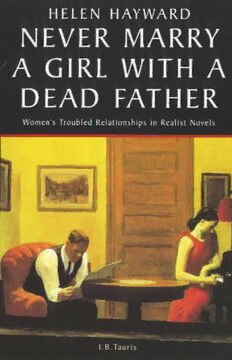
Never Marry A Girl With A Dead Father: Hysteria in the 19th Century Novel PDF
162 Pages·1999·3.772 MB·English
Most books are stored in the elastic cloud where traffic is expensive. For this reason, we have a limit on daily download.
Preview Never Marry A Girl With A Dead Father: Hysteria in the 19th Century Novel
Description:
Freud's "discovery" of hysteria was both anticipated by, and grounded in, 19th-century realist fiction. Here, the author reveals how the dark continent that Freud called femininity was brought to life by these realist novelists. The hysterical character, she argues, conceives of every relationship as tragic, imaginatively doomed - hence the warning which forms the title of this book.Yet this character speaks for everyone. The insights of Anna Karenina, Gwendolen Harleth, or Cassandra give to them a dignity beyond pathology or their social position. They are not merely literary "femmes fatales". It is part of being civilized, the author argues, to fear the people and things we love, particularly when they are intimate to us. Knowing this, each person is responsible for the form this apprehension takes - whether awe or panic, respect or protest, desire or denial. She develops these ideas through of texts by Balzac, George Eliot, Charlotte Bronte, Tolstoy and Florence Nightingale, demonstrating her contention that these narratives are rich sources for understanding hysterical states of mind because they offer scope for interpretation that involves everyone as readers.
See more
The list of books you might like
Most books are stored in the elastic cloud where traffic is expensive. For this reason, we have a limit on daily download.
